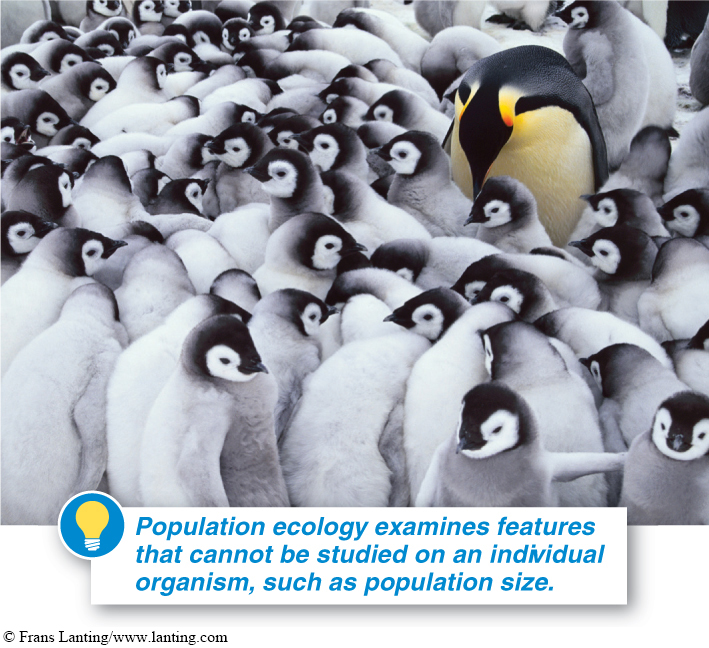As we begin our study of population ecology, a subtle but critical shift in perspective is required. It is a shift from the individual to the population—

As an example of how a population perspective is needed, consider the case of adaptations produced by natural selection. Genetic changes don’t occur within an individual. That is, a longer neck did not evolve in one individual giraffe. Instead, the genetic changes occurred within a population of giraffes over time. As a consequence of differential reproductive success among the individuals of a population with different neck lengths, there came to be more individuals with longer necks over time. Birth rates, death rates, and immigration and emigration rates are also features not of individuals but of populations.
574
In the next sections, we explore how populations grow, a question important both to the management of consumable natural resources—
TAKE-HOME MESSAGE 14.2
Most ecological processes cannot be observed or studied within an individual. Rather, we need to consider the entire group of individuals that regularly exchange genes in a particular locale.
How do the main units of focus in biology and ecology differ?
Much of biology focuses on the individual. Ecology, however, focuses on organisms at the population level.